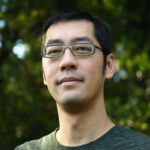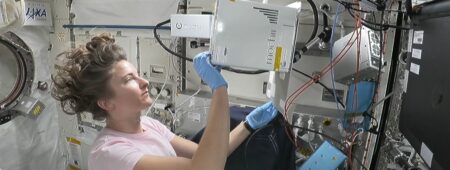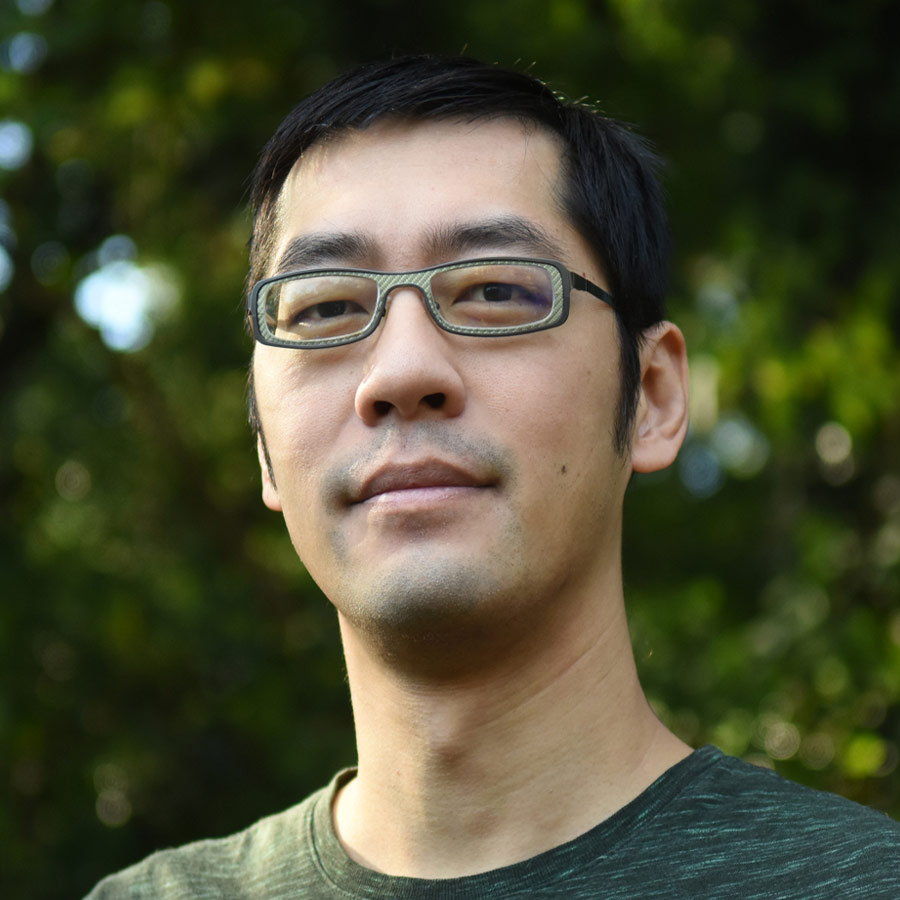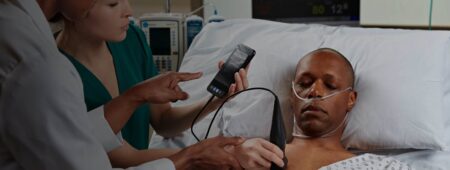
Revolutionizing Imaging at the Nano-Scale

Chris Own likes to quote Lord Kelvin, one of the fathers of thermodynamics.
“When you can measure what you are speaking about, and express it in numbers, you know something about it,” Kelvin said in 1883. “But when you cannot measure it, when you cannot express it in numbers, your knowledge is of a meagre and unsatisfactory kind.”
In other words, Own says, “You get what you measure.”
His company, Voxa, makes automated and portable nanoscale imaging instruments to scan and measure the infinite variety of nanosurfaces in our physical world, helping us to understand the universe we live in. As founder and CEO, the Hertz Fellow oversees the development of instruments that improve our understanding of materials and biological systems at the sub-micrometer scale, providing foundational elements for the next generation of technologies.
The company’s focus is on improving capabilities of advanced instruments, and making those capabilities more widely accessible. His teams have helped researchers produce some of the largest anatomical datasets ever created and have sent the first electron microscope to space. The company also provides its clients with custom nanomechanical automation solutions.
Improving Advanced Instrument Capabilities
Voxa systems are helping to unlock scientific secrets in a vast range of environments — from the infinite wilderness of outer space to cellular organization and interaction, from agricultural settings to research labs — and doing it in a variety of ways. Like automation: “We ask, how can we improve this thing by a factor of one million?” Own says. “One way is by removing people from the process of repetitive tasks, freeing them up to apply their brains to more important problems.”
Own’s team developed an ultra-high-throughput transmission electron microscope (TEM) imaging pipeline, called the Voxa Blade™, for sample delivery and imaging. With its exquisitely high resolution and sensitivity, TEM is considered the “gold standard” of nano-imaging. Using traditional manual electron microscopy workflows, it would take at least 1,000 years to fully image and model a whole mouse brain at the synapse level (~1 exabyte of data), but a fleet of Voxa’s scalable Blade tools could achieve this within about a year.

Voxa’s technology is also bringing powerful electron optical imaging to new audiences and new places with its Mochii™ microscope. This equipment used to be as big as a pickup truck, but the Mochii is as compact as a coffeemaker and can run off an iPad — the innovation is in its portability, affordability, and accessibility. This means that its capabilities are accessible to a much wider population — not just researchers in well-funded labs — and can be used much farther afield.
Case in point: In February 2020, the Mochii microscope was sent into space for use aboard the International Space Station. This unique microgravity research platform provides in situ engineering analyses and mission science while orbiting. Scientists on Earth can schedule time to analyze their own research samples on-board, accelerating answers to many new scientific inquiries.
The Democratization of Measurement
Own’s passion for the importance of precise measurement is matched by his commitment to the ideal of a democratic approach: that the ability to measure things efficiently should be available to as many as possible. “Democratization is core to what we do with every product,” he says. “Blade has produced the densest and most detailed map of brain tissue in history, and that map is freely accessible to the public.”
Since the development of the electron microscope in the 1930s, scientists, engineers, and researchers have used powerful nano-imaging to understand the natural world and engineer new materials, but that technology has been locked in elite research labs.
“There are countless lines of inquiry at the nanoscale — in our work and living spaces, our natural environments, and in our bodies. We only need the right tools to look. We want to bring these tools to places they’ve never been,” Own says. By miniaturizing them to be portable and making them simpler to use, he says, we’re vastly expanding the potential for their use, which has previously been limited by cost, size, and difficulty of use. “Why not put the capability on your kitchen table? Take it to an oil field? Or to the bottom of the ocean in an underwater research lab?” he says.
Own compares this idea to the field of cartography during the age of exploration. In the 15th century, mapmakers made global exploration easily visible to everyone, and also enabled explorers to return to the new lands they’d often discovered by accident. By mapping territories, explorers increased information flow and the wealth of new opportunities it provided.
Likewise, better quality mapping of tissue systems has the potential to exponentially increase discovery. “These things are right under our noses, but we can’t see them without suitable tools,” he says. “The more detailed a map you have, the more discovery is possible.”
From Academia to Industry
Trained in materials science and engineering at Northwestern University and firmly grounded in math and physics, Own realized that “biologists have all the interesting problems; the things that really impact humans now are in the biosciences.” In addition to Voxa, he founded two profitable companies with a focus on building digital hardware systems for consumer and research customers. His technical career spans thin films research, electron crystallography, materials characterization, biological imaging and informatics, and spaceflight instrumentation.
It was while he was pursuing his doctorate at Northwestern that Own received his fellowship from the Hertz Foundation. That funding enabled him to seed his first companies while in graduate school, giving him not only an education in the sciences, but an informal business education as well. It helped him see his path was not in academia, but in industry.
“The Hertz Fellowship gave me the unbridled freedom to pursue anything that interested me, in particular to gain the foundational skills necessary to contribute meaningfully to the advancement of technologies benefiting humankind,” Own says. “It also connected me with a community of outstanding individuals who continually amaze and inspire me to never stop learning and to work with others to aim ever higher. It’s a gift that keeps on giving.”
Written by Kirsten Mickelwait



